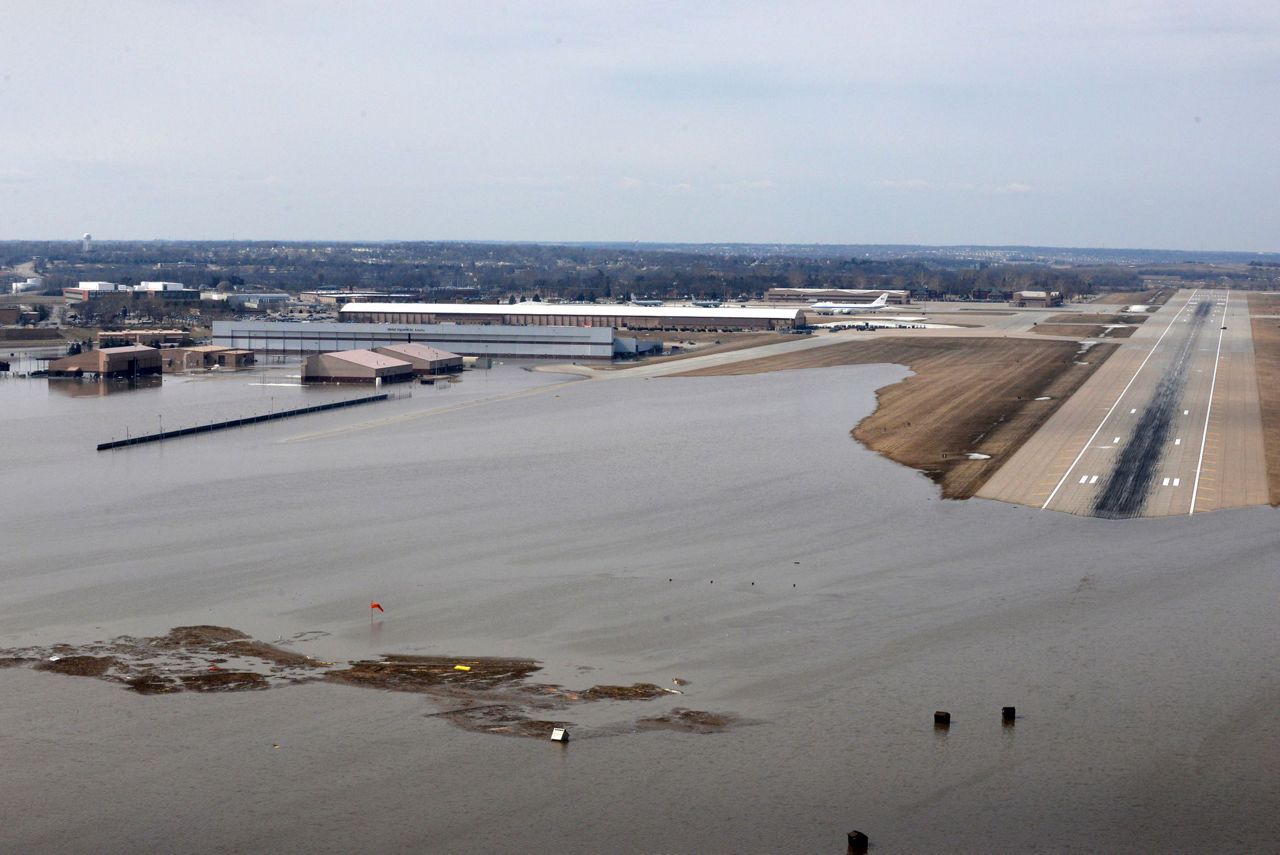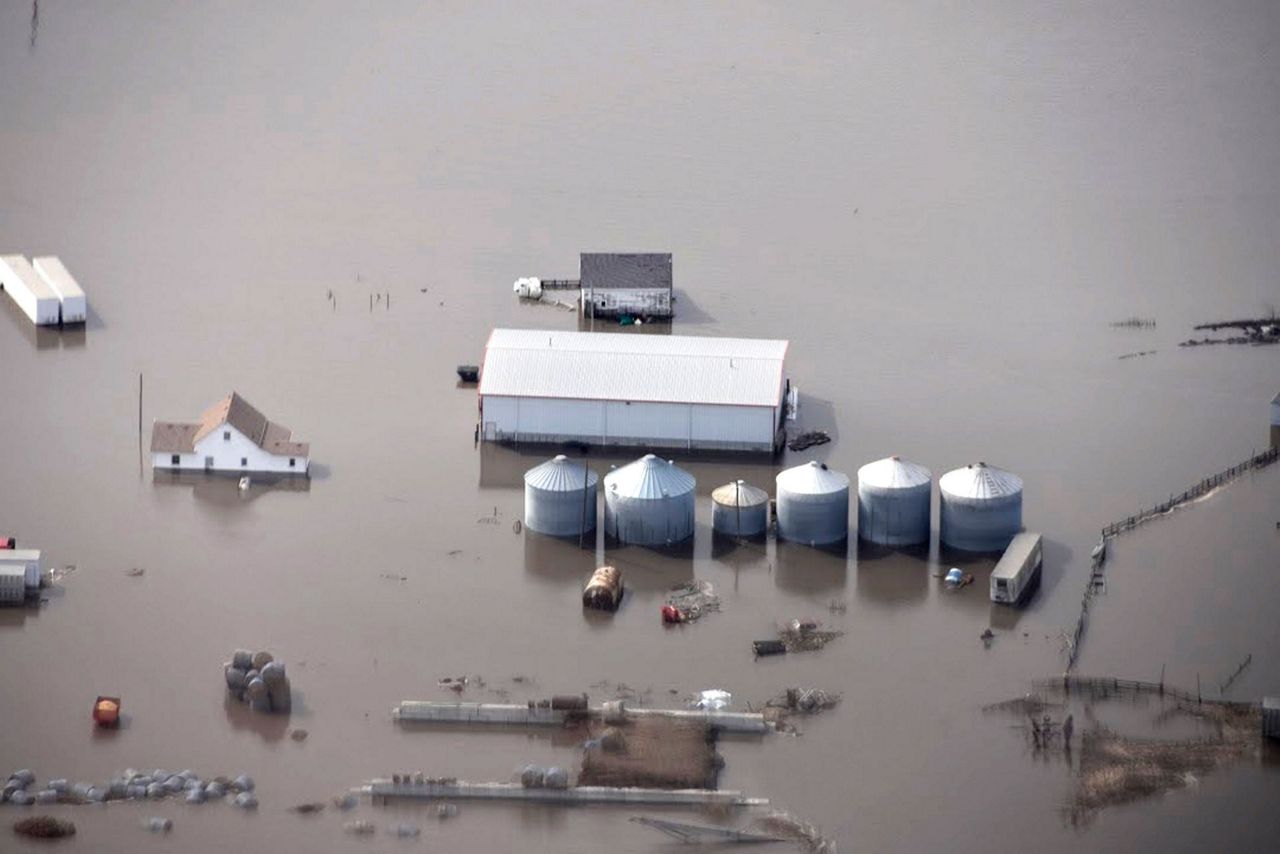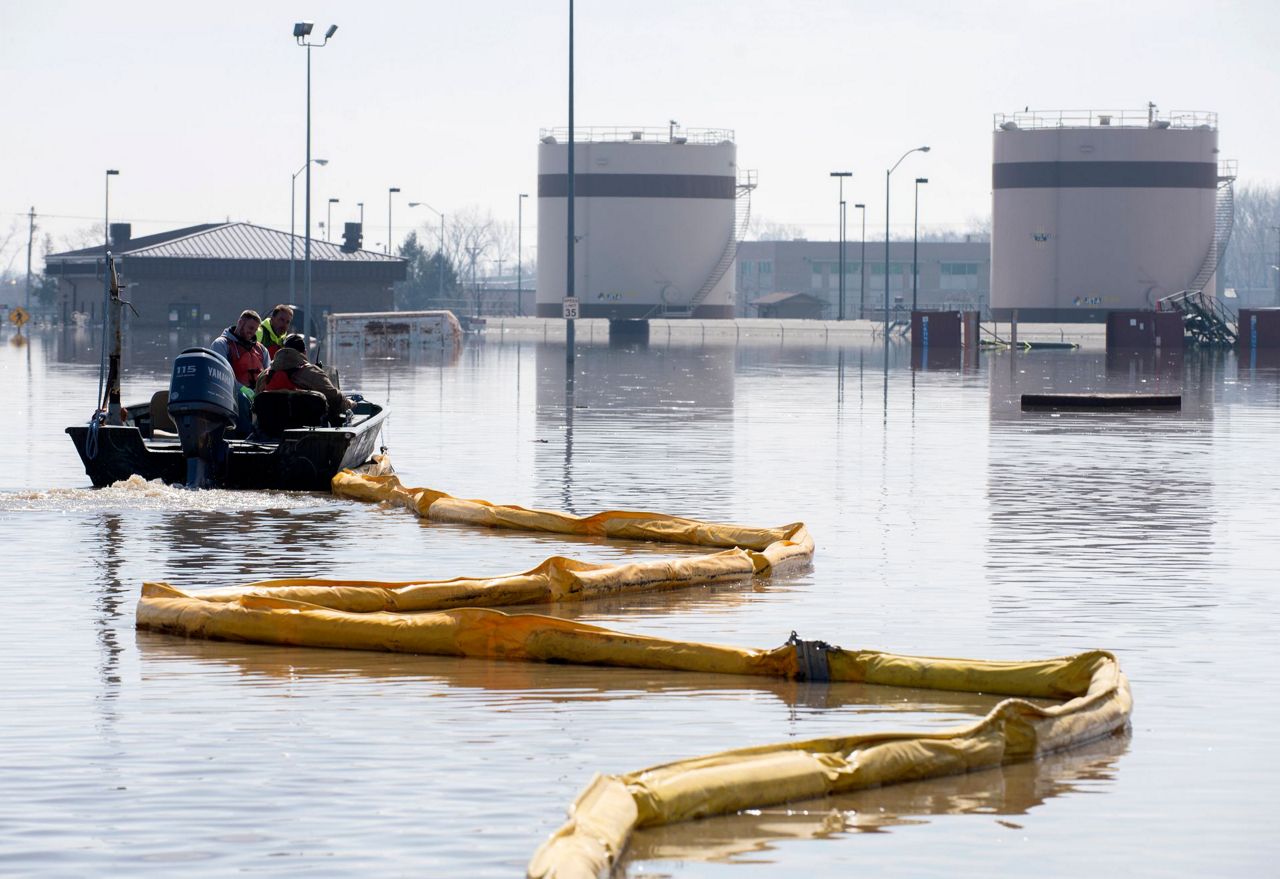OMAHA, Neb. (AP) — After this spring's massive flooding along the Missouri River, many want to blame the agency that manages the river's dams for making the disaster worse, but it may not be that simple.
The U.S. Army Corps of Engineers says much of the water that created the flooding came from rain and melting snow that flowed into the river downstream of all the dams, and at the same time, massive amounts of water filled the reservoirs and some had to be released.
For instance, the National Weather Service estimates that enough water poured into the reservoir behind Gavin's Point Dam on the South Dakota-Nebraska border during nine days in mid-March to totally fill the reservoir from empty more than twice.
But many people who live near the Missouri River believe the Corps isn't doing enough to prevent floods or is placing too much emphasis on other priorities, such as protecting endangered species and preserving barge traffic.
Republican U.S. Sen. Josh Hawley of Missouri said Corps officials told him this week that they treat all eight priorities for the river equally.
"I was told point-blank, 'Flood control is not our top priority. It is not. Period.' They were very firm on that point," Hawley said. "I said, 'You've got to be kidding me.'"
Corps officials say they work to balance all the priorities Congress approved when operating the dams, but no single priority outweighs all the others. Their operating model tries to maximize the benefit to several priorities when possible.
Hawley said Congress should consider "serious reform," such as deciding if the Corps should be taken out of the Department of Defense and placed under direction of another agency, such as the Department of Transportation or the Department of the Interior.
The Corps manages the Missouri River's system of dams and locks and decides when and how much water is released from reservoirs into the river. The severe flooding this month in Nebraska, Kansas, Iowa and Missouri has renewed criticism of the Corps' management of the river.
Officials estimate that the flooding caused more than $1 billion of damage to farms in Nebraska and Iowa, destroying stored crops and killing livestock. And the damage total will grow as floodwaters recede and other states assess conditions.
Nearly 400 farmers, landowners and business operators sued the Corps after the historic 2011 floods — and won. U.S. District Judge Nancy B. Firestone's ruling last year determined that severe Missouri River flooding "was caused by and was the foreseeable result" of the agency's management practices.
R. Dan Boulware, the St. Joseph, Missouri-based attorney for the lawsuit's plaintiffs, said those management practices are still in place, contributing to the flooding this month. He said the Corps stores more water in six upper-Missouri River basins than it needs to, and has also modified structures like dikes.
"The river itself is changed," Boulware said. "It spreads out and it doesn't flow like it used to flow. It's like a sluggish drain — it backs up."
Corps officials declined to discuss the lawsuit because it is still ongoing, but they defended the way they handled this spring's flooding. John Remus oversees the dams, including Gavin's Point Dam, for the Corps.
"There was far more water coming into Gavin's Point than we could hold," Remus said.
And the National Weather Service's Kevin Low said significantly more water poured into the Missouri River from rivers in Nebraska and Iowa with no dams, so officials couldn't regulate the flow from those. Low said the Platte River peaked at over 170,000 cubic feet per second of water on March 17.
Most other rivers that feed into the lower Missouri crested around the same time after heavy rains helped melt lingering snowpack that flowed right into rivers because the ground was still mostly frozen.
Emergency management directors in two northwestern Missouri counties that took the brunt of this year's flood damage have differing views on the Corps' responsibility.
Buchanan County Emergency Management Director Bill Brinton said a dam failure to the north sent a surge of additional water into the river, worsening an already bad situation.
"That dam failed and you had billions of gallons of water," Brinton said. "I don't see how you can blame the Corps. But I seem to be in the minority."
In Holt County, Missouri, 460 homes were damaged when the flood reached a foot above the 2011 record, and most are still underwater, Emergency Management Director Tom Bullock said.
Bullock's home is among the flooded ones. He's taken a motorboat out to it a few times but won't know the extent of the damage until he gets inside the home.
"They told us after the flood of '11 if you build up and elevate above this certain level it'll never happen again, so I did that," Bullock said. "It still wasn't high enough. So I don't know what the answer is. It gets pretty expensive."
Much of the concern about the Corps' management dates to 2004, when it initiated a management change partly to protect endangered species, including the pallid sturgeon, a seldom-seen, bottom-feeding fish.
Bullock agreed 2004 was the turning point when the Corps "started managing the river for recreation and wildlife."
"Used to be at the top of the list was flood control first place, and navigation second place. Those two things have moved to the bottom of the list," Bullock said.
"Ever since that happened, we've been flooded out regularly down here in the bottom," he added.
He's worried his and his neighbors' homes will be hit again this spring.
"We don't see an end in sight yet," Bullock said. "All of our levees are just destroyed. We have no protection from the high river now, or spring rains. We're sitting there exposed."
___
Salter contributed to this report from St. Louis.
Copyright 2019 The Associated Press. All rights reserved. This material may not be published, broadcast, rewritten or redistributed.





